Sourwood (Oxydendrum arboreum), also referred to as sorrel or lily-of-the-valley tree, is a flowering tree native to the eastern United States. Sourwood trees are the source of sourwood honey. Sourwood leaves, flowers, and bark are edible, but some caution needs to be exercised when ingesting to avoid overdose.
Oxydendrum arboreum plant profile
Scientific name, Oxydendrum arboreum, this deciduous tree is one of the largest members of the Ericaceae (heath) family.
The sourwoods genus and common name, Oxydendrum, define the flavor associated with the leaves of this show-stopping tree. Oxy – Greek for acid or sour, and dendron – meaning tree.
It boasts beautiful fall colors ranging from orange-red to a deep crimson, and fragrant white flowers resembling the lily-of-the-valley flower.
What Are You Foraging For Right Now?
We're thrilled to hear your ideas. What would you like to submit today? Feel free to share your thoughts and experiences with us.
The dramatic color of sourwood fall foliage is one of the most long-lasting displays of the season. The deep green leaves begin to change in late summer and continue to deepen through fall, sometimes as late as November.
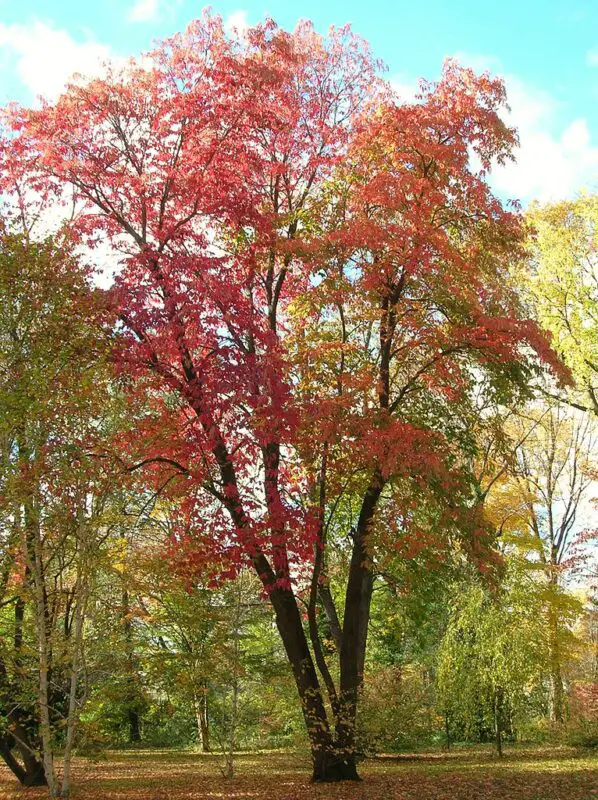
Where do sourwoods grow?
As a native tree to North America, sourwoods are not readily found on other continents unless purposefully planted there.
They are prominent in many areas of the eastern United States, growing most easily in USDA hardiness zones 5-9.
Sourwood trees are a regular feature in wooded areas of North Carolina, Florida, Louisiana, Kentucky, areas of the Appalachians, and as far north as New York. It’s particularly prolific in areas of Pennsylvania and the Smokey Mountains, where it can reach its greatest height.
Sourwoods have a fairly rapid growth rate and prefer slightly acidic soil. They are often seen on slopes where it grows as an understory tree and in areas where rhododendrons (another plant type within the heath family) grow.
Is sourwood a honey?
Sourwood trees are the source of sourwood honey, whose unique flavor makes it a coveted treat.
Despite the name, sourwood honey isn’t at all sour. It is, in fact, sweet and slightly creamy.
Detectable flavors in sourwood honey include hints of maple, caramel, anise, and a warm spice finish.
Although sourwood trees are found in several locations in the eastern United States, the trees found in the Appalachians and smokey mountains of Tennessee are the primary location for honey harvest.
If you’re interested to know about another tree very well known for producing large quantities of high-quality honey, check out my article on Chinese tallow.
What does a sourwood tree look like?
Sourwoods stand 30-70 feet tall. Growing conditions dictate the final appearance of sourwoods.
Grown in areas with part shade, the trees grow taller and narrower with a columnar appearance and largely limbless trunks.
In open areas with full sun, sourwoods will have a more pyramidal shape and low-growing branches that reach nearly the ground.
Sourwood trees produce clusters of small showy white flowers whose appearance is the reason it’s often referred to as the lily-of-the-valley tree.
The most prominent display of flowers is from July to August. Once the flowers have receded, cream-colored seed capsules take their place—the unusual-looking pods hand throughout the tree in racemes lasting through the autumn months.
During the summer bloom time, the clusters of flowers sit amongst green, glossy leaves. As the flowers get replaced with seed capsules, the leaves also begin to change, turning beautiful shades of red and orange.
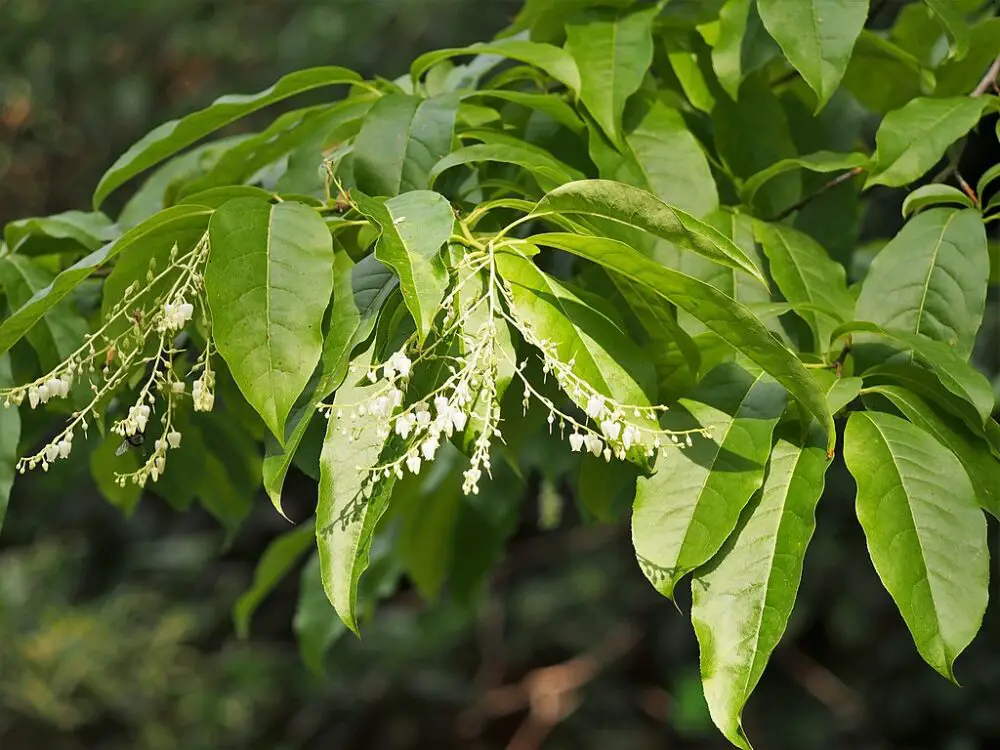
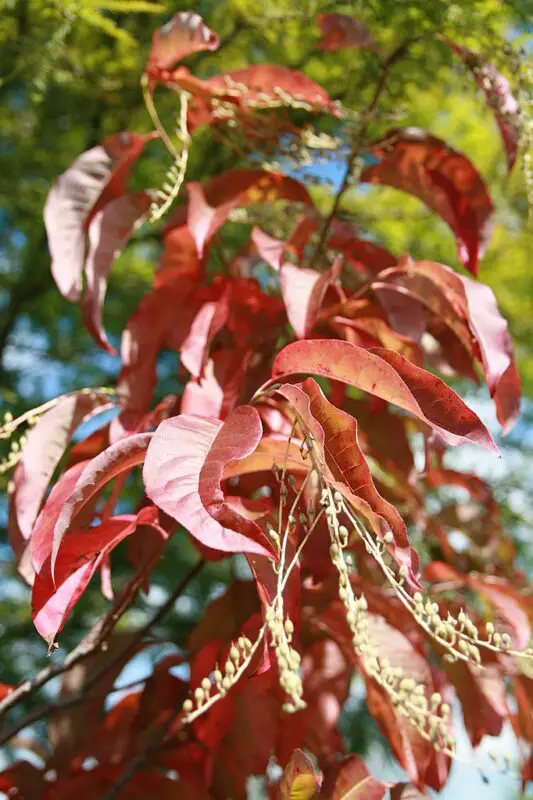
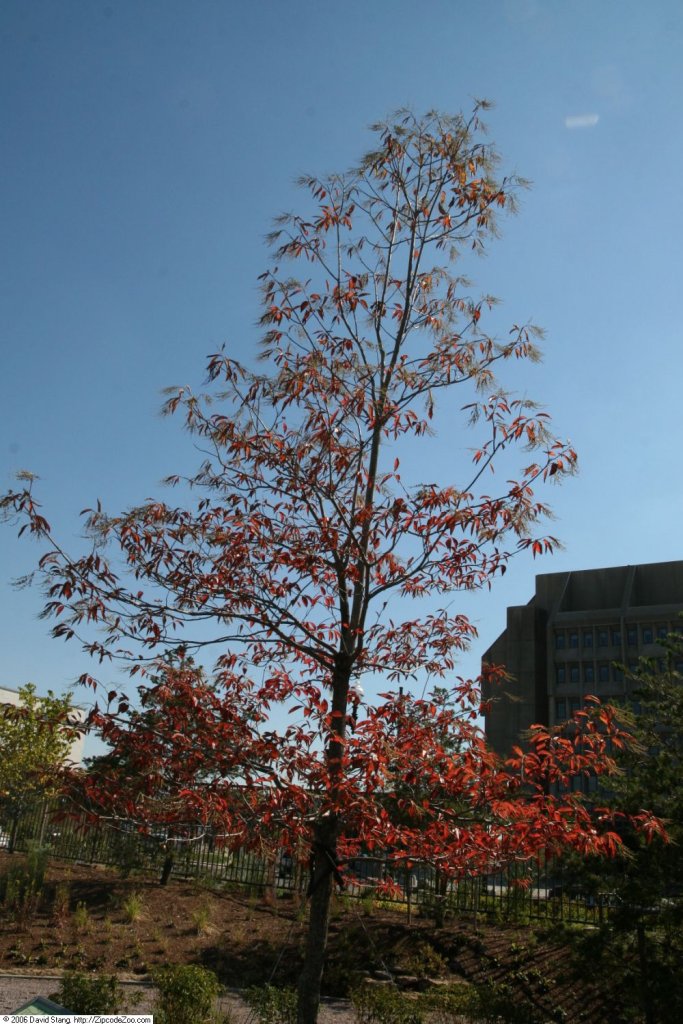
How to identify sourwood
The easiest way to identify sourwood trees is by their distinctive flowers, bark, and leaves.
Look for the following key attributes:
- Creamy white flowers that grow in long panicles throughout the summer.
- Long, lanceolate-shaped, shiny green leaves with a red tinge along the edge that turn a dramatic red during the fall.
- Gray bark with deep creases and a texture that resembles alligator skin.
In the summer, small, oblong-shaped fruits are also present. These fruits are covered in fine hair and begin yellow and mature into a gray-brown color.
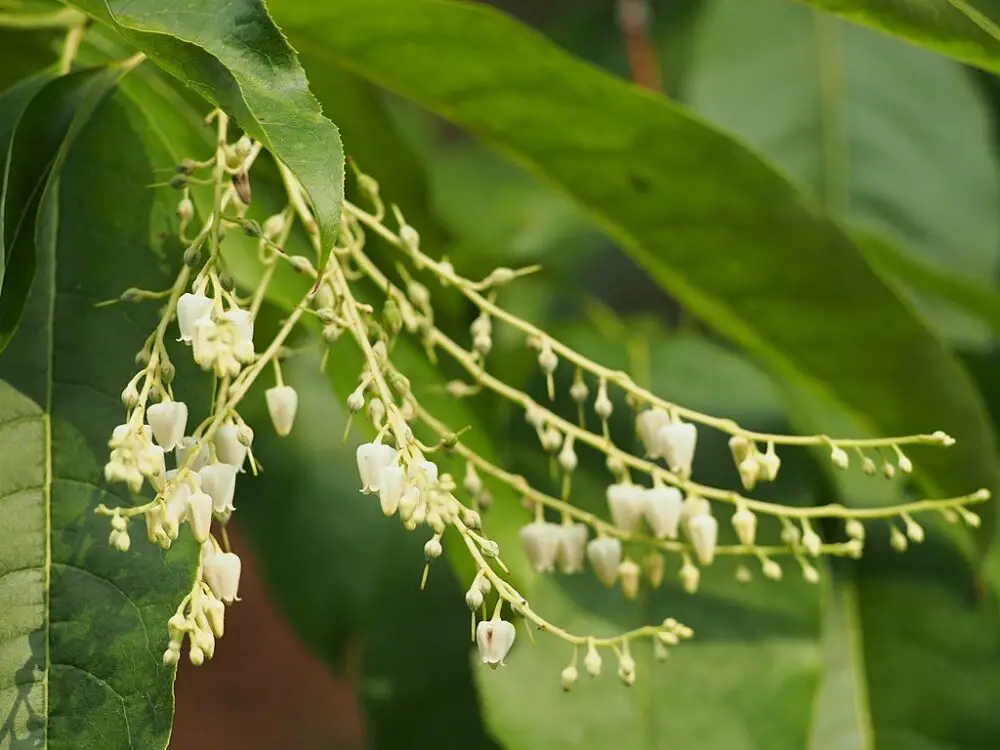
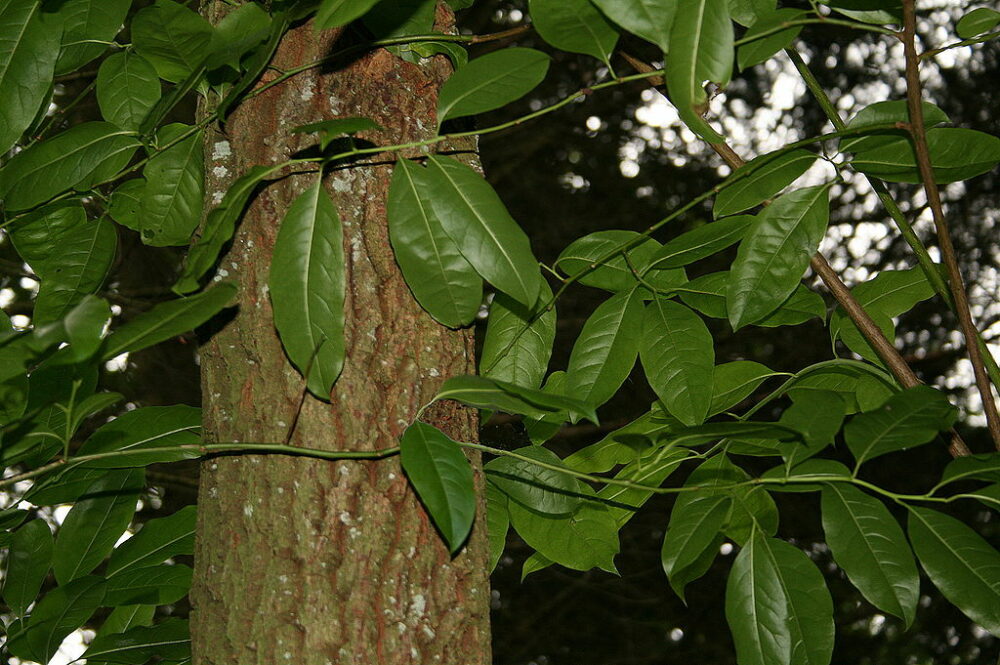
Is sourwood edible?
Sourwood leaves, flowers, and bark are edible, but some caution needs to be exercised when ingesting to avoid overdose.
- The flowers can be chewed or juiced and used to make jelly. They have a tangy, fresh taste to them.
- In addition, the same flowers are a beekeeper’s dream: they are the source of prized sourwood honey.
- The bark of the sourwood tree can also be chewed to treat mouth sores.
- The most versatile of the sourwood tree components are its leaves. A sourwood tree’s leaves can be chewed to help quench thirst, made into tea, or added to salads, soups, or stews.
In addition, the leaves of the sourwood are said to have medicinal benefits, helping with:
- Fever reduction
- Dysentery
- Asthma
- Nausea
- Kidney and bladder problems
Care must be taken when consuming sourwood leaves, as they have a laxative effect in large doses.
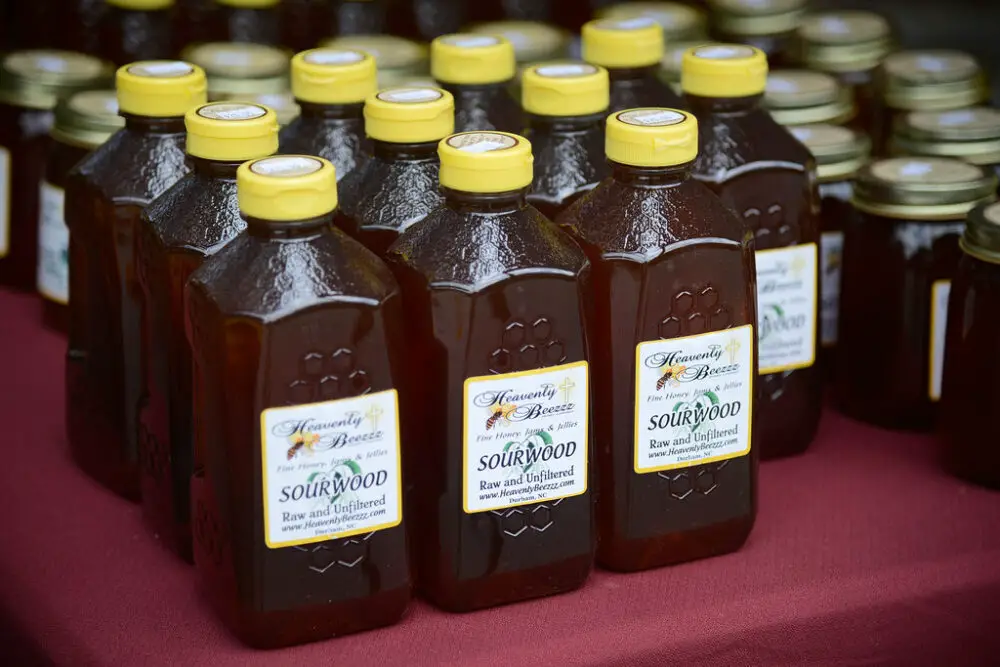
How to cook with sourwood leaves
The most common culinary use for sourwood leaves is in tea. It’s through the consumption of this tea that sourwood’s medicinal benefits are delivered.
The young leaves can also be a tasty addition to salads, offering a slightly acidic flavor. They can also be added to soups and stews to create a unique and delicious flavor profile.
As with any wildly foraged plants, be careful to clean thoroughly before eating and ensure the plants you choose are free from contaminants.
Lorin is a writer, photographer and nature enthusiast in Sacramento, CA. In addition to gardening, she makes a regular practice of forging for edible plants and flowers. Nature nourishes if you know where to look.

